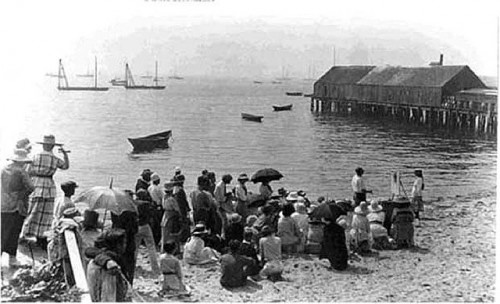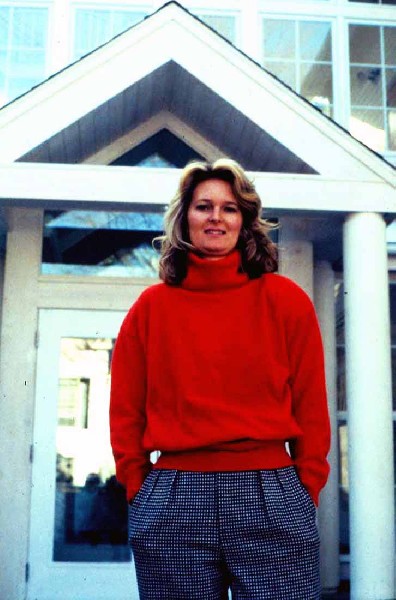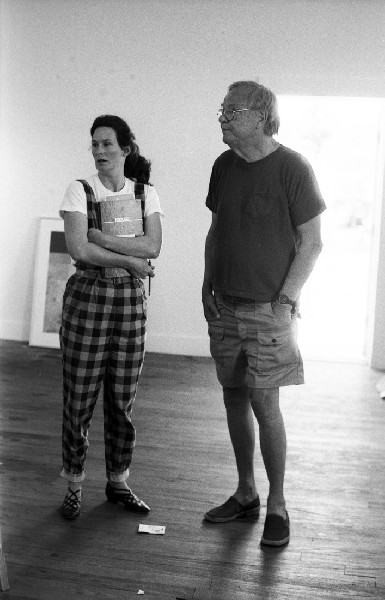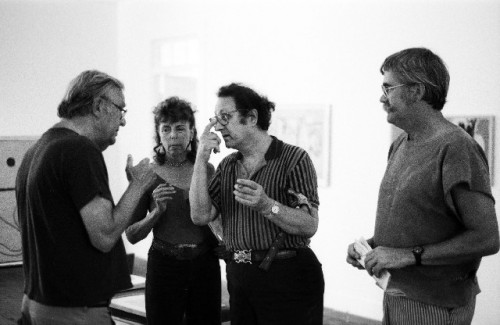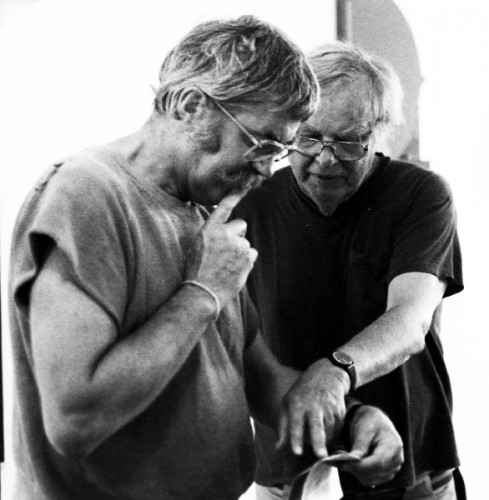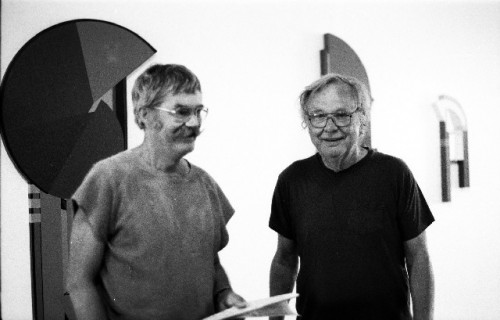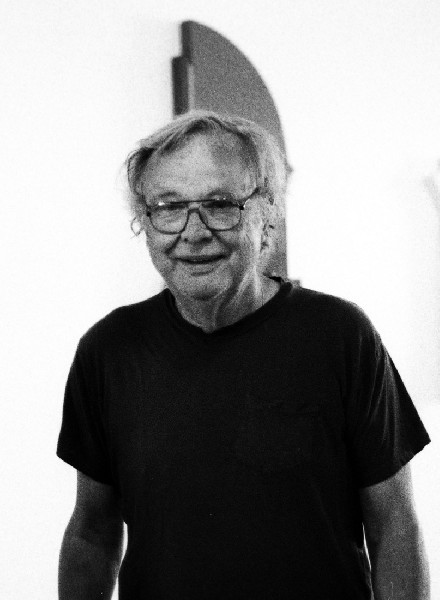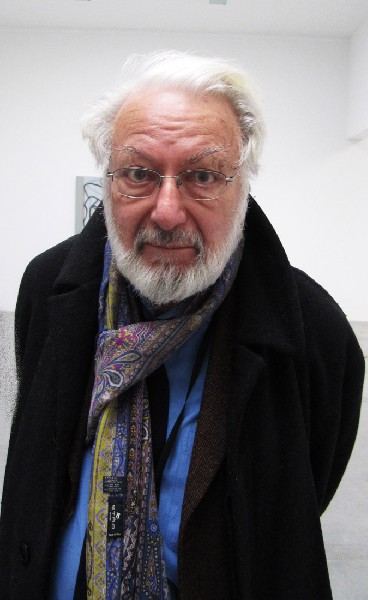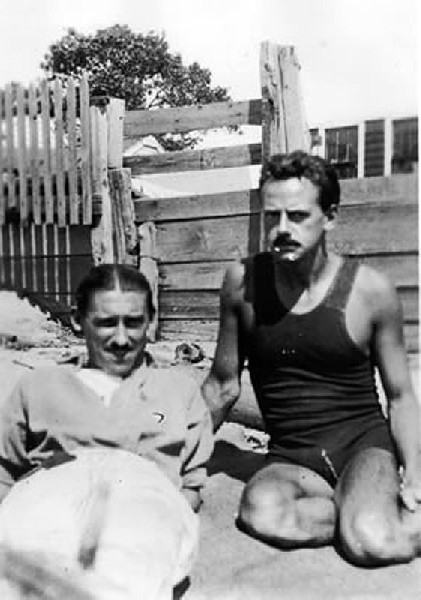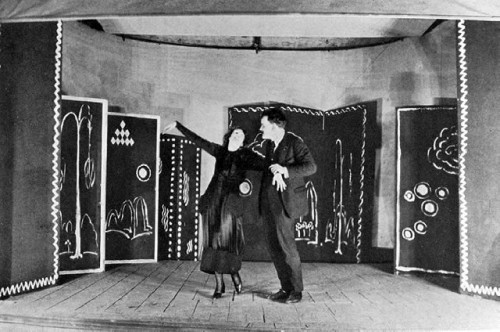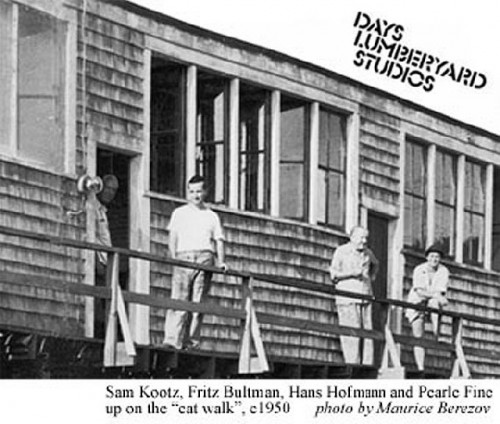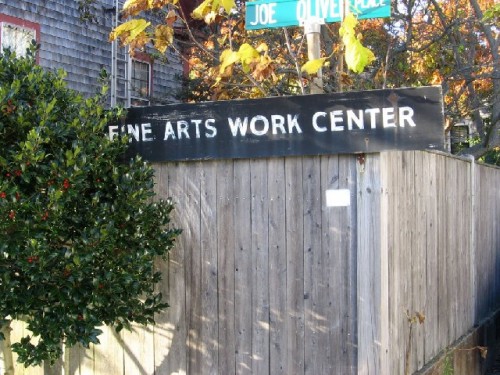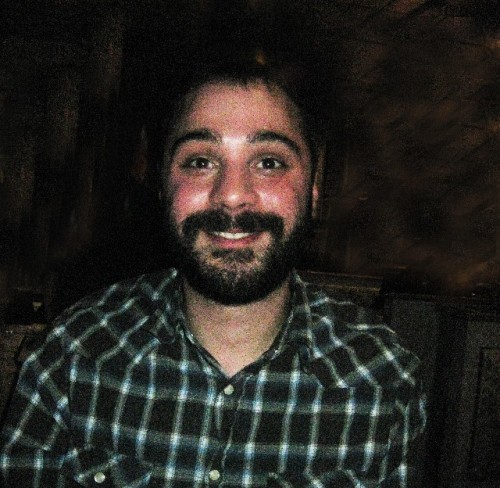Provincetown’s Christine McCarthy Part Three
Renovating and Upgrading for the Next Century
By: Christine McCarthy and Charles Giuliano - Apr 29, 2013
Charles Giuliano Prior to World War I Charles Hawthorne (January 8, 1872 – November 29, 1930) taught art during the summer and attracted what morphen into an artists’ colony. When a number of women, who had been living as expatriates in Paris, migrated to Provincetown because of the outbreak of war in 1914 that planted the seeds of a gay community that expanded over the years.
You made the comment that the Provincetown Art Mafia (Long Point Gallery group) which I mentioned “has died.” That being the case what is the current status of Provincetown as an arts colony?
When I was in graduate school and started coming here to research Karl Knaths and the historic art colony in the late 1970s and 1980s there was a very different sense of the community than what one experiences today. I interviewed a number of the Long Point artists and attended many of their openings.
People were very helpful including Nat Halper and Tony Vevers. The then director Ellen O’Donnell (Rankin) connected me with a number of key individuals and invited me to be a part of juries for shows and participate in panels like a memorable one during the Fall Arts Festival. It’s when I first met Chris Busa, then starting Provinctown Arts Magazine, which I wrote for on several occasions.
Many of the artists I met were elderly or ill like Fritz Bultman. Motherwell was alive and Judith Rothschild was very helpful. There was still the very strong feeling of an art colony. We haven’t toured the galleries during this visit. There seem to be a lot of them but they are not showing work that I am interested in.
Christine McCarthy Today there is a handful of galleries still devoted to the historic art colony: Julie Heller, Berta Walker, the Schoolhouse. Julie has two locations now. A lot of artists come and open their own galleries to show their work. There’s a lot of that. Some of them last and some of them don’t.
CG Is there a New Mafia? Is Provinctown still a viable art colony? We see a lot of amateur work on your walls. Is Provincetown still a destination for serious artists?
CM It’s hard because it’s so expensive to live here. If you want to be here you have to figure out how to do that. You might have to work four jobs during the summer. You can paint all winter and do what you have to do. Yes, I think there is still a committed cadre of artists who come here.
We boast that we are America’s oldest art colony and home of American Theatre.
(“The Provincetown Players began when a group of writers and artists who were vacationing in Provincetown, MA presented their plays July 15, 1915 on the veranda of Hutchins Hapgood and Neith Boyce's rented ocean-view cottage. The two plays were Constancy by Neith Boyce and Suppressed Desires by husband and wife George Cram Cook and Susan Glaspell. Boyce had previously had a reading of her play in her home a few weeks prior and this caused Cook and Glaspell to add their play to create a social event for their friends.
”Two makeshift sets, one facing the ocean and one facing the living room, were quickly organized by Robert Edmond Jones, already the most prominent American practicing the ‘New Stagecraft,’ who was also vacationing in Provincetown. Many friends and neighbors not in attendance that night heard about the plays and wanted to see them, so they were presented in a makeshift theatre on a wharf owned by Mary Heaton Vorse. Their popularity was such that, led by George Cram Cook, two more plays were presented that summer, which included amateur acting by visual artists Charles Demuth and B. J. O. Nordfeldt, and Cook.
”Back in Greenwich Village, New York City, where most of the group lived, Cook stirred up enthusiasm that fall and winter such that an even greater number of writers and artists made their way to Provincetown the next summer. These new participants included journalist and poet John Reed, writer Louise Bryant, painter Marsden Hartley, artists William and Marguerite Zorach, the famed "Hobo Poet" Harry Kemp, editor of The Masses Max Eastman, his wife Ida Rauh, Floyd Dell, and Eugene O'Neill.
“Despite a mythology that presents O'Neill just happening to show up in Provincetown with a trunk full of plays, recent research proves that O'Neill knew of the Players and came to Cape Cod specifically to participate with them. In fact, he was directly invited by John Reed, though Reed seems to have had no idea that O’Neill was having an affair with his girlfriend Bryant, another reason for O’Neill to travel to Cape Cod. Though the group initially rejected some of O’Neill’s earliest written plays, which had been self-published with the help of his father, prominent American actor James O’Neill, he finally read for them his play Bound East for Cardiff, a play set at sea.”)
When I came here this facility was falling down and there was no theatre. The Library just did a renovation. The Fine Arts Work Center just did a renovation. I think that in the grand scheme of facilities we have all raised the bar. We had to.
CG I like the emphasis on “we had to.” Was there a community wide consensus that something had to happen?
CM I think so. For theatre you want to come and see a Eugene O’Neill play or Tennessee Williams. You had to go to the Provincetown Inn. Because there was no theatre. There used to be theatre in this building. There wasn’t going to be theatre anymore in this building so they had to build a theatre. (Provincetown Theater) It made sense. Because there wasn’t a viable venue to showcase and represent the legacy of American theatre in Provincetown. Which is huge.
The Fine Arts Work Center is bringing fellows from all over the place and the studios are falling down. There is an enormous historical legacy to those studios where Ross Moffett, Edwin Dickinson and so many others worked.
(Originally Day’s Lumber Yard where artists found cheap space for summer rentals. Including many young artists who came to study with Hans Hofmann.)
Just for preservation purposes it needed to be renovated.
We got our acts together and got these facilities renovated and built. We couldn’t even get teachers for our program. We had a one room school house and nobody wanted to teach here. It was too dark and either too hot in summer or too cold in winter. Now we have four studios which have gorgeous light in them. We now have 80 teachers here on a year round basis.
CG Is anything degree granting?
CM We had an affiliation with Cape Cod Community College where credits transferred. We did it for ten years but it got dull. It was off the shelf Painting 101.
We don’t have an accredited program yet. It is something we would like to do. The Fine Arts Work Center has a low residency MFA program. They are affiliated with Mass College of Art. I don’t know the status of that. It’s been in process for four or five years. We do the thesis show here. Yeah, there are ways. U. Mass Dartmouth. We’ve had lots of conversations with them of how we can do this; transfer of credits.
Bottom line, if we build it will then come? Yeah. Will they take classes? Yes. Are they the Peter Busas and Robert Motherwells of that era? I don’t think so. Not yet anyway. I don’t have the answers. I see people like Bob Henry and Selina Trieff who not only teach in the school but also exhibit in these shows. They have been on our board and I see them as the old guard because they studied with Hofmann and continue his traditions. I see people like Peter Watts and people in their 70’s and 80’s who are the respected artists of their generation who work and show in Provincetown.
What about younger ones? That’s part of the issue how to get younger artists to stay here. The Fine Arts Work Center presents a beautiful cadre of young contemporary artists. The minute they’re done with their program. A few of them stay here but most want to go to New York or Chicago. I can’t blame them. They’re the ones who want shows at the ICA. When I was there, and we did an Ellen Gallagher show, she had been a Fine Arts Work Center Fellow. There’s a huge number of Fine Arts Work Center alumni who have done very well in the contemporary art world. They love Provincetown and want to come and visit. Paul Bowen. They don’t want to stay here anymore. It’s really expensive to live here and it’s not the New York scene.
That’s different. I don’t think we want this to be New York. We love the connections we have to New York. We apply to the foundations in New York and they still support us because Provincetown was important in the careers of so many artists. Like Wolf Kahn and Judith Rothschild, Hans Hofmann and his students. There’s wonderful foundations which support this institution because of the artist’s affiliation with Provincetown.
Provincetown is still a funky, nutty, wacky place. Because of the light and geography that still draws people here. There are people who want to paint, photograph, and draw it.
Yeah, I still see that. I do. Are they the best artists I’ve ever seen in my life? Well, who are the best artists? That changes on a daily basis. I go back and forth when I’m in New York looking at stuff. There are things that I love. There are a handful of things in this show (members) which I could pick out. And out of our collection as well.
I feel very strongly that this is a mission driven organization. We are a membership driven organization. People come in here and feel safe. We provide comfort; films, lectures. I still learn something here every day. No matter what we have here I learn something. This is a place that offers up something different for everybody all the time. It’s community place. It’s regional. It’s community.
We’re not New York. People are given wonderful opportunities to show in a museum. They get picked up by galleries through showing here. They sell their work here. It’s a place where we don’t discriminate. We accept on all levels, race, faith, you name it. That makes people feel good about being here. That’s very important to me as opposed to is it the best art we’ve ever seen? Is it the crème de la crème? It’s all subjective and that’s how I feel.
There are shows I’ve curated that people have loved and shows I’ve curated that people have hated. I do it because it’s work I feel connected to. That’s why we have a lot of guest curators. There’s not one style of anything here. There are so many people who are actually involved in the process. Curating, hanging and showing. That’s what makes this place funky and great.
CG How do you prioritize your programming? One assumes that there is a high season that starts at Memorial Day.
CM Yes and now it extends through October. We do one giant members show in July. We do one each summer for the entire membership. That’s why from May to October we have Elspeth Halvorsen, she does boxes, Jim Balla, he’s been here for 20 years and shows at the Albert Merola Gallery, paintings and abstract prints, Jim Peters a show of mostly his figures. The Pioneers of Provincetown, that’s the big group summer show. That’s going to be in the Hofmann Gallery which is our largest space. A lot of the artists were Hofmann students so we want to have them in the named gallery.
CG Yeah, right, but I see them more as artists associated with the Sun Gallery.
(Yvonne Anderson, Bill Barrell, Robert Beauchamp, Gandy Brodie, Emilio Cruz, Red Grooms, Mimi Gross, Lester Johnson, Wolf Kahn, George McNeil, Jay Milder, Jan Muller, Peter Passuntino, George Segal, Tony Vevers)
CM Right. But when I applied to the Hofmann Foundation for funding I featured Beauchamp and Vevers. Artists of the Hofmann ilk.
CG The Sun Gallery was a matrix for the dialogue about the return to the figure. That issue was ubiquitous among artists on the cusp between the apogee of abstract expressionism. It developed into a convergence of parallel streams that spawned the lesser known movement of figurative expressionism, and the era defining emergence of Pop art from the 1950s into the 1960s. The Pioneers of Provincetown, as I understand it through dialogues with the curator Adam Zucker, focuses on figurative expressionism.
(The Sun Gallery was the most innovative gallery of its time. Located at 393 Commercial Street, it operated on a shoestring from 1956 to 1959. Sun Gallery owners Yvonne Anderson and Dominic Falcone held art exhibitions and presented readings by poets such as Lawrence Ferlinghetti and Happenings by Red Grooms and Alan Kaprow. Lester Johnson showed each summer. Participating artists included among others Bob Beauchamp, Bob Thompson, Jan Muller, Robert and Mary Frank, Tony Vevers and Red Grooms. Claes Oldenburg’s first show was with The Sun Gallery. In 1960 the gallery was taken over by Bill Barrell.)
CM We had a Sun Gallery exhibition of artists that focused on what they did then and what they do now.
(There was an earlier exhibition July 24 - August 30, 1981. In an interview Red Grooms discussed Hofmann’s influence and the Sun Gallery artists “I loved his (Hofmann’s) work. There was always this line about him that he was a better teacher than he was an artist, but I don’t think that was true, actually. He really was a great painter. His work has a strong position with Pollock and de Kooning and Kline and Rothko. He’s right in there with them, I would say, as the top level of that great generation. But for some reason, he was a bit put down, I guess, by the success of his teaching. And of course, he was so influential to a generation that’s a little older than mine, but a generation that influenced me, like Larry Rivers.
”The generation that I actually identify with was the generation in Provincetown who ran the Sun Gallery: Yvonne Anderson and Dominic Falcone. They were kind of the anti-Hofmann because their idea was more figurative. They were showing artists like Lester Johnson and Tony Vevers and Alex Katz and Jan Muller. They had this program that I liked and I fit right into, which eventually kind of went in a Pop Art direction.”)
Dominic and Yvonne came and screened some of their films. They ended up gifting some to PAAM. We have films of the exhibitions at Sun Gallery. Then they would go to Ciro and Sal’s and make calamari. We have a portfolio of photographs by Jules Aarons that he did of exhibitions at Sun Gallery. So we have a lot of that stuff in our collection.
CG Will the films and photographs be included in the show?
CM I don’t think so. Adam is very specific about what he wants to include which is primarily the figurative painters.
CG How is PAAM set up for scholars if one wanted to come and do research?
CM We have an archivist on staff. You call for an appointment and he will pull whatever you need.
CG That really didn’t exist in the past.
CM We get research requests all the time. We get them almost ever day. So we are set up for that. When Knoedler did Avery/ Rothko we provided most of the archival material for that catalogue.
(E.A. Carmean, Jr., 2002, curated for Knoedler & Company the exhibition Coming to Light: Avery, Gottlieb, Rothko, Provincetown Summers 1957-1961.)
When the MFA did Blanche Lazzell in 2001 most of the research came from us.
Research is a huge part of PAAM as we are gifted so many papers. My dream would be to get a graduate student here for a year to archive all of that material. Not all of it is digitized. Some is and some isn’t. We have so many wonderful vintage photographs and I would love to see them accessible on line. It’s a matter of getting people in here and a grant to do it. We were gifted from The Lillian Orlowsky and William Freed Foundation. They were students of Hofmann. They left a very large endowment to give scholarships to painters who are over 45, do not have gallery affiliations, and are in financial need.
CG That sounds like the Pollock/ Krasner Foundation.
CM Kind of. We just started four years ago and are now in the fourth cycle. We have jurors from all over the country who physically come to Provincetown. We give away $40,000 usually four $10,000 grants. Or two for $20,000. Whatever the jurors feel about people who deserve it. Then they have a group show here. I just love that we can give money away instead of always asking for it. This helps quite a bit and it was listed last year as one of the top twenty artists’ grants. We have over 400 applicants this year from all over the country.

